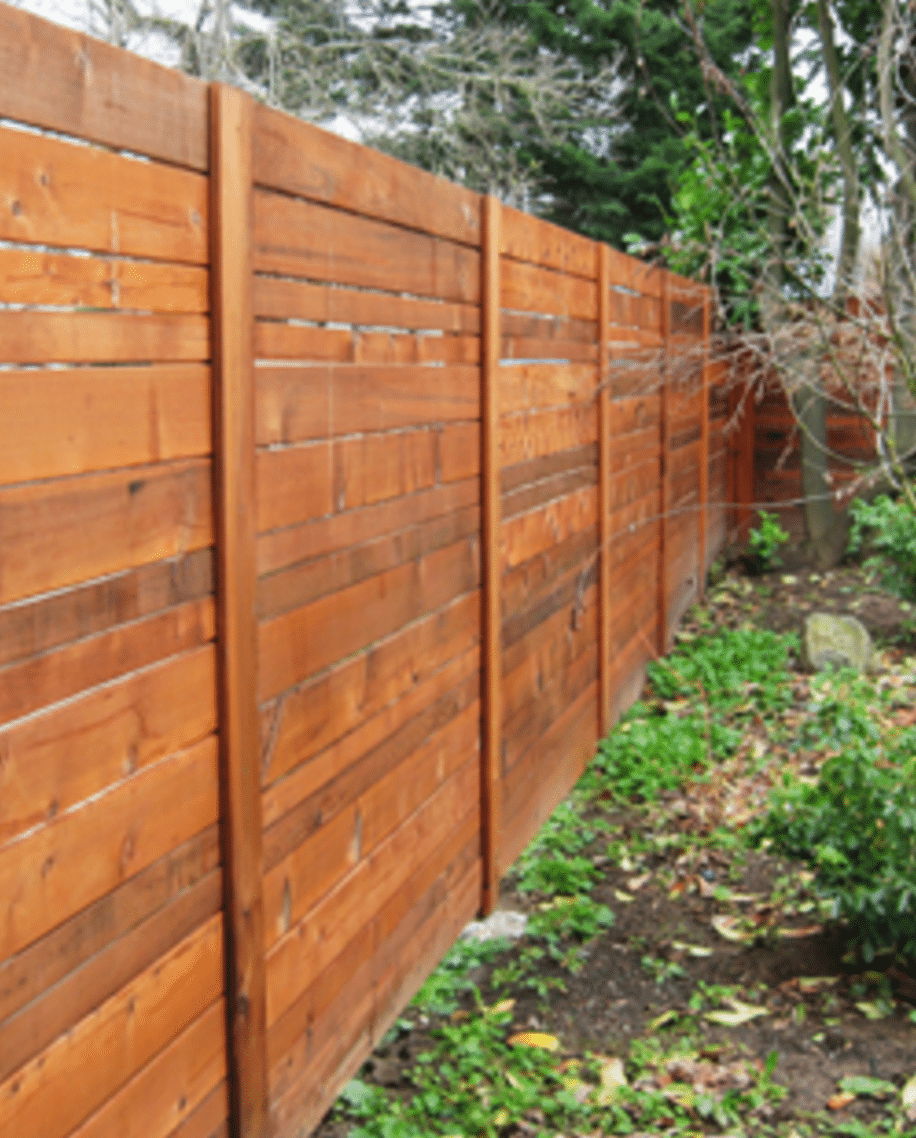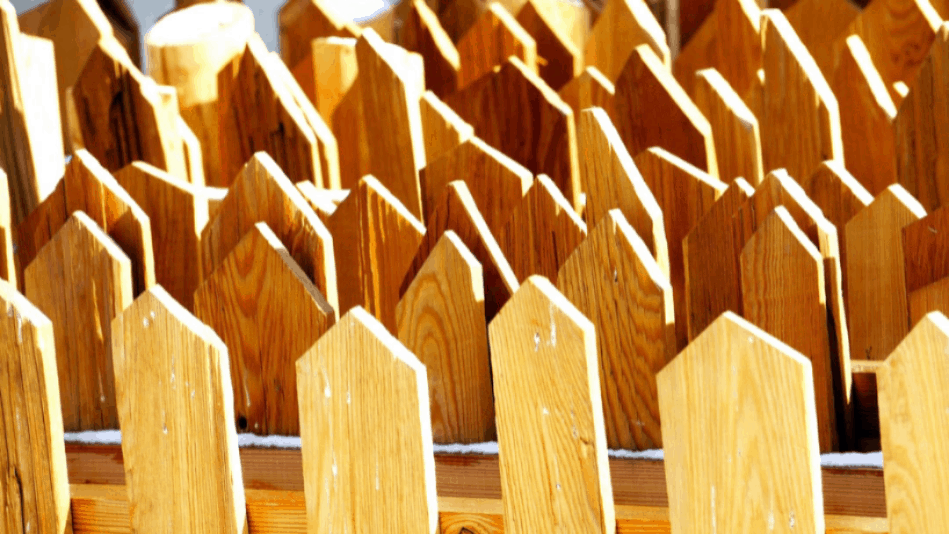All Categories
Featured
Whether you have a wooden, plastic, metal, or composite fencing, taking steps to secure it from the climate will certainly prolong its life and protect its appearance. Here are several means you can protect your fence from weather-related damages.
![]()
Wooden Fencings: Timber is prone to rot, warping, and insect invasions when exposed to dampness. If you pick a wood fence, pick materials like cedar or redwood, which are normally extra immune to the aspects. Furthermore, go with pressure-treated wood, which has actually been chemically treated to stand up to rot and bugs. Plastic Fences: Vinyl fences are highly resistant to the components. They will not rot, warp, or split like timber, and they are unsusceptible to insect damage. Vinyl is also UV-resistant, so it doesn't discolor in the sun as rapidly as various other products. Metal Fencings: Wrought iron and light weight aluminum fences are sturdy and immune to many weather condition conditions. Metal can corrosion if revealed to moisture for long term durations. Guarantee it is powder-coated or galvanized to stop rusting if you have a metal fencing. Composite Fences: Compound fencings incorporate wood fibers and plastic, offering the look of wood with enhanced sturdiness. They are immune to rot, pests, and fading, making them a great choice for areas with extreme weather problems. 2. Apply Protective Coatings and Sealants. Using protective finishes to your fencing can stop moisture and UV damage, considerably extending its life expectancy.
Wooden Fencings: To safeguard timber from wetness and UV rays, use a top quality discolor or sealer. These finishings serve as a barrier, protecting against water from saturating right into the wood and triggering rot. Furthermore, they protect against sunlight damages that can trigger fading and fracturing. Make certain to reapply the discolor or sealer every few years, depending on the environment and the problem of the fencing. Plastic Fences: Although plastic fences are extremely resilient, they can still discolor in time as a result of UV direct exposure. You can apply a UV protectant to keep your plastic fencing looking like brand-new. Additionally, regular cleaning with a vinyl-safe cleaner can aid avoid staining and staining. Metal Fencings: Metal fencings, especially those made from iron or steel, can rust with time. A rust-resistant guide followed by a coat of weather-resistant paint will assist protect against deterioration. For added defense, consider powder finishing, which provides a sturdy, lasting coating that withstands rust and scrapes. 3. Regular Cleansing and Upkeep. Keeping your fence well-kept and clean is among the most efficient means to stop weather-related damages.
Wooden Fencings: Dirt, particles, and mold and mildew can accumulate on wooden fences with time. Normal cleansing with a moderate soap solution or pressure washer can aid prevent the build-up of grime. Make sure to check the timber for indications of damage such as rot or splitting and address issues quickly. Plastic Fencings: Plastic fences are low-maintenance, but they can accumulate dust, leaves, and other debris. To cleanse a plastic fencing, simply tube it down or wash it with soapy water. For tougher stains, make use of a soft cloth with a vinyl-safe cleaner. Metal Fencings: Steel fences can gather dust, dirt, and rust, especially after a storm. Tidy the fencing consistently using a non-abrasive cloth and light soap. Remove any type of rust immediately with a wire brush or corrosion remover to stop it from spreading out. 4. Mount a Fence Base Guard. For fences subjected to heavy rainfall or snow, setting up a fence base guard can prevent moisture from penetrating the bottom of your fencing articles. This is particularly vital for composite and wood fences, as water exposure at the base of the fence can bring about decaying or deterioration.
Along with base protectors, consider making use of gravel or a moisture-resistant barrier around all-time low of wooden blog posts. This will permit water to drain away from the base of the messages and lower the danger of rot.
![]()
Consistently trim back plants and trees that are near the fence. This will certainly aid maintain the fencing dry, stop unwanted stress on the framework, and make sure that air distributes around the posts.
For metal fencings, check for corrosion prior to the winter season and treat any type of damaged locations. You can additionally use a safety finishing to stop snow and ice from triggering corrosion.
![]()
Final thought. Shielding your fencing from weather-related damage is essential to ensuring its durability and performance. By selecting the ideal products, using protective finishings, keeping your fencing tidy, and taking proactive upkeep actions, you can prevent a number of the common problems that develop from exposure to the components. Whether you have a wooden, vinyl, steel, or composite fence, these measures will certainly aid secure your financial investment and keep your fence looking wonderful for many years ahead.

- Select Weather-Resistant Materials. The product of your fence plays a significant duty in its capacity to stand up to different climate condition. Selecting a material that suits your climate can aid minimize weather-related damage.
Wooden Fencings: Timber is prone to rot, warping, and insect invasions when exposed to dampness. If you pick a wood fence, pick materials like cedar or redwood, which are normally extra immune to the aspects. Furthermore, go with pressure-treated wood, which has actually been chemically treated to stand up to rot and bugs. Plastic Fences: Vinyl fences are highly resistant to the components. They will not rot, warp, or split like timber, and they are unsusceptible to insect damage. Vinyl is also UV-resistant, so it doesn't discolor in the sun as rapidly as various other products. Metal Fencings: Wrought iron and light weight aluminum fences are sturdy and immune to many weather condition conditions. Metal can corrosion if revealed to moisture for long term durations. Guarantee it is powder-coated or galvanized to stop rusting if you have a metal fencing. Composite Fences: Compound fencings incorporate wood fibers and plastic, offering the look of wood with enhanced sturdiness. They are immune to rot, pests, and fading, making them a great choice for areas with extreme weather problems. 2. Apply Protective Coatings and Sealants. Using protective finishes to your fencing can stop moisture and UV damage, considerably extending its life expectancy.
Wooden Fencings: To safeguard timber from wetness and UV rays, use a top quality discolor or sealer. These finishings serve as a barrier, protecting against water from saturating right into the wood and triggering rot. Furthermore, they protect against sunlight damages that can trigger fading and fracturing. Make certain to reapply the discolor or sealer every few years, depending on the environment and the problem of the fencing. Plastic Fences: Although plastic fences are extremely resilient, they can still discolor in time as a result of UV direct exposure. You can apply a UV protectant to keep your plastic fencing looking like brand-new. Additionally, regular cleaning with a vinyl-safe cleaner can aid avoid staining and staining. Metal Fencings: Metal fencings, especially those made from iron or steel, can rust with time. A rust-resistant guide followed by a coat of weather-resistant paint will assist protect against deterioration. For added defense, consider powder finishing, which provides a sturdy, lasting coating that withstands rust and scrapes. 3. Regular Cleansing and Upkeep. Keeping your fence well-kept and clean is among the most efficient means to stop weather-related damages.
Wooden Fencings: Dirt, particles, and mold and mildew can accumulate on wooden fences with time. Normal cleansing with a moderate soap solution or pressure washer can aid prevent the build-up of grime. Make sure to check the timber for indications of damage such as rot or splitting and address issues quickly. Plastic Fencings: Plastic fences are low-maintenance, but they can accumulate dust, leaves, and other debris. To cleanse a plastic fencing, simply tube it down or wash it with soapy water. For tougher stains, make use of a soft cloth with a vinyl-safe cleaner. Metal Fencings: Steel fences can gather dust, dirt, and rust, especially after a storm. Tidy the fencing consistently using a non-abrasive cloth and light soap. Remove any type of rust immediately with a wire brush or corrosion remover to stop it from spreading out. 4. Mount a Fence Base Guard. For fences subjected to heavy rainfall or snow, setting up a fence base guard can prevent moisture from penetrating the bottom of your fencing articles. This is particularly vital for composite and wood fences, as water exposure at the base of the fence can bring about decaying or deterioration.
Along with base protectors, consider making use of gravel or a moisture-resistant barrier around all-time low of wooden blog posts. This will permit water to drain away from the base of the messages and lower the danger of rot.

- Trim Plants Around Your Fencing. Plants, bushes, and trees expanding also close to your fencing can create significant weather-related damage. Overgrown plant life can trap dampness against the fencing, promoting rot and mold and mildew growth. In addition, tree origins can press versus fencing articles, causing them to break or move.
Consistently trim back plants and trees that are near the fence. This will certainly aid maintain the fencing dry, stop unwanted stress on the framework, and make sure that air distributes around the posts.
- Prepare Your Fencing for Winter season. In regions with chilly wintertimes, freezing temperature levels and ice can be specifically harming to wooden fencings. Water that gets in the timber can freeze, triggering fractures and splits. To prevent this, ensure that your wood fence posts are correctly secured and raised over the ground to stop water from accumulating at the base.
For metal fencings, check for corrosion prior to the winter season and treat any type of damaged locations. You can additionally use a safety finishing to stop snow and ice from triggering corrosion.
.jpg)
- Post-Storm Maintenance. After a hefty storm, check your fencing for any indications of damage, such as loosened blog posts, curved panels, or particles lodged in between slats. Also minor damage needs to be fixed rapidly to stop more degeneration. If your fencing has been damaged by a storm, strengthen weak areas and replace damaged areas as soon as possible to keep its structural stability.
Final thought. Shielding your fencing from weather-related damage is essential to ensuring its durability and performance. By selecting the ideal products, using protective finishings, keeping your fencing tidy, and taking proactive upkeep actions, you can prevent a number of the common problems that develop from exposure to the components. Whether you have a wooden, vinyl, steel, or composite fence, these measures will certainly aid secure your financial investment and keep your fence looking wonderful for many years ahead.
Latest Posts
Explore Limited-Time Auto Repair Offers in Chicago at Montclare Auto Repair
Published May 27, 25
1 min read
Explore Auto Services & More: Complete Auto Care Solutions from Montclare Auto Repair
Published May 27, 25
1 min read
Specialist Residential Roof Solutions You Can Count On
Published May 25, 25
1 min read
More
Latest Posts
Explore Limited-Time Auto Repair Offers in Chicago at Montclare Auto Repair
Published May 27, 25
1 min read
Explore Auto Services & More: Complete Auto Care Solutions from Montclare Auto Repair
Published May 27, 25
1 min read
Specialist Residential Roof Solutions You Can Count On
Published May 25, 25
1 min read